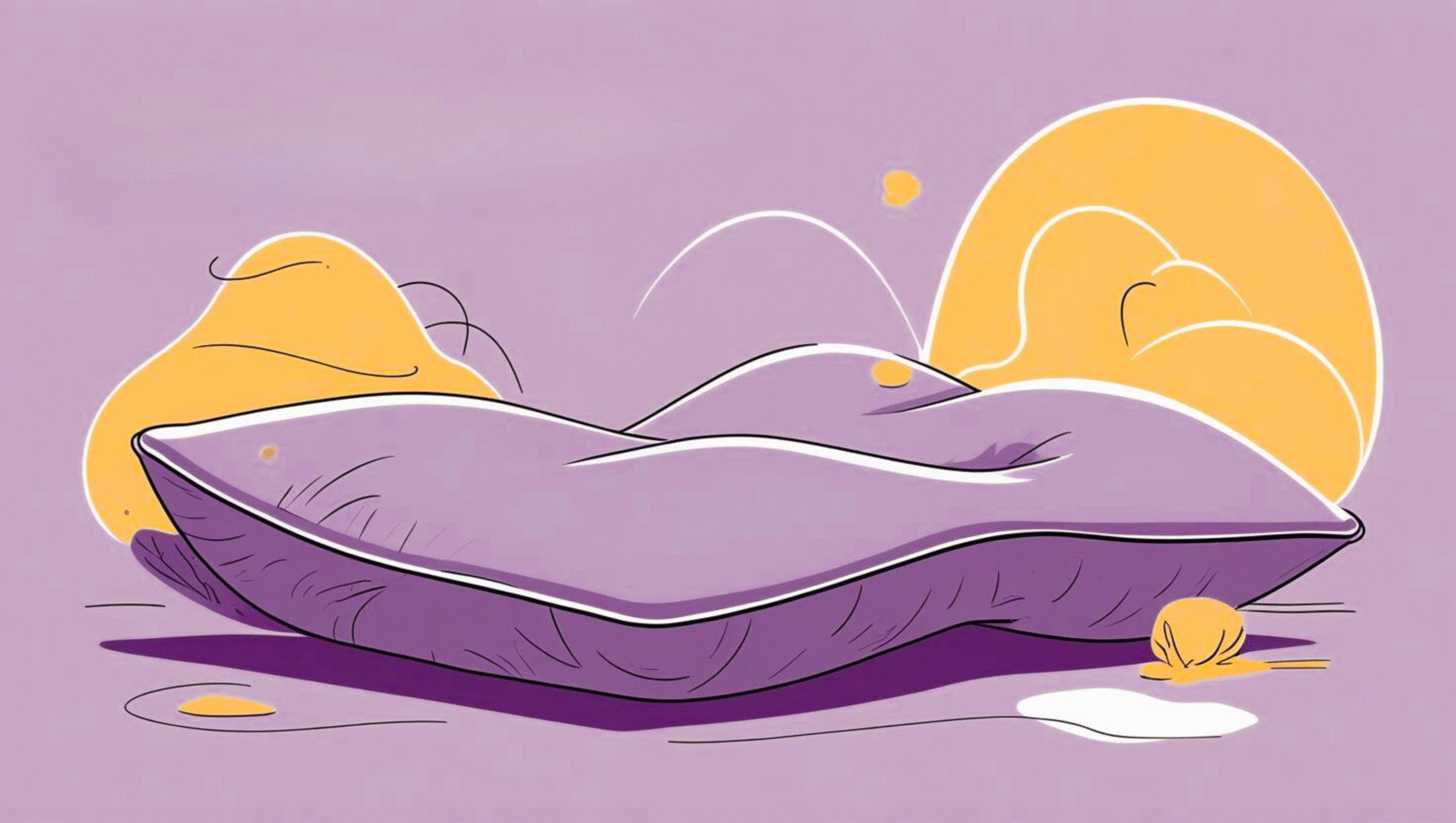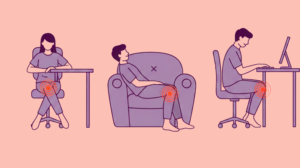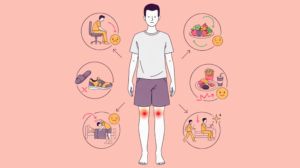Switching to a contour pillow, especially one made from memory foam, can feel like a smart upgrade for your sleep health. These pillows are specifically designed to support the natural curve of your neck, promising relief from stiffness, headaches, and discomfort. However, many people find the transition period challenging. If you’re feeling discomfort or even new neck pain after switching pillows, don’t worry, it’s often part of the process.
This article provides expert tips to break in your new contour pillow, overcome adjustment issues, and sleep better in the long term.
Why a Break-in Period is Important?
Understanding Memory Foam and Contour Support
Contour pillows, especially those made from memory foam, work differently from traditional pillows. They are designed to cradle your neck and align your spine, offering targeted support that may initially feel rigid or unnatural. Memory foam responds to body heat and pressure, slowly conforming to your shape over time (Radwan et al., 2021).
Initial Discomfort vs. Long-Term Benefits
It’s common to experience slight discomfort in the beginning. Your muscles and spine are adapting to a more supportive and aligned posture, especially if you’ve been using a flat or soft pillow for years. This adjustment is temporary and often results in improved sleep quality, reduced neck pain, and better posture in the long run (Lavender et al., 2017).
Common Challenges with a New Contour Pillow
- Stiffness or soreness in the neck or shoulders
- Feeling that the pillow is “too hard” or “too high”
- Disrupted sleep due to unfamiliar shape or firmness
- Sweating or overheating due to memory foam’s low breathability
- Difficulty in finding a comfortable position initially
Most of these issues are temporary and can be managed with a few simple strategies.
Effective Tips to Break in Your Contour Pillow
Use It for Short Periods at First
If your new pillow feels drastically different, don’t switch cold turkey. Start by using it for naps or short periods during the night. This gradual exposure allows your body to get used to the shape and firmness without causing strain (Chiu et al., 2014).
Warm Up the Foam Naturally
Memory foam tends to feel firmer in cold environments. Before bed, allow the pillow to sit at room temperature or let it warm up under a blanket. Your body heat will help soften the foam, making it more comfortable (Yamamoto et al., 2015).
Try Different Pillowcase Materials
The outer fabric can influence how a pillow feels. Cotton or bamboo pillowcases are breathable and soft, which helps reduce overheating and adds to overall comfort. Avoid thick or synthetic pillowcases that trap heat and reduce airflow.
Maintain Correct Sleeping Posture
A contour pillow is designed to align your neck and spine. To take full advantage of this:
- Back sleepers should let the pillow’s contour support the neck while the head rests in the groove.
- Side sleepers should ensure that the higher side of the pillow supports the neck without elevating the head too much.
Improper alignment can lead to more pain, so always double-check your position (Gordon et al., 2009).
Allow 1–2 Weeks for Full Adjustment
It typically takes 7 to 14 nights to fully adjust to a contour pillow. During this time, you might wake up feeling stiff or notice changes in your sleeping posture. These are signs that your muscles are realigning, and it’s generally a good thing.
Consistent use is the key to experiencing full benefits.
When to Seek an Alternative?
If Discomfort Persists
If after two weeks you’re still experiencing pain, poor sleep, or worsening symptoms, the pillow may not be right for your body type or sleeping style.
Signs the Pillow Might Not Suit You
- Pillow feels too high or low for your neck length
- Persistent headaches or upper back pain
- Excessive sweating or allergic reactions
- You’re a stomach sleeper (contour pillows are not ideal for this position)
Everyone’s body is different—sometimes a different contour height or a softer/firm pillow density may suit you better.
Care Tips to Maximize Comfort and Longevity
Cleaning Instructions
Memory foam is sensitive to moisture. Use a removable, washable pillowcase and spot-clean the foam with mild detergent when necessary. Avoid machine washing unless the manufacturer says otherwise.
Rotating the Pillow
Every few nights, rotate the pillow head-to-toe to evenly distribute wear. This maintains its contour shape and extends its life.
Avoiding Moisture Damage
Keep the pillow dry and well-ventilated. If your room is humid, consider using a dehumidifier or moisture-absorbing packets nearby.
Conclusion
Adjusting to a new contour pillow can be challenging, but the rewards—reduced pain, better posture, and improved sleep—are well worth the effort. By following these break-in tips and giving your body time to adapt, you can make the most of your investment in better sleep health.
FAQs
How long does it take to adjust to a new contour pillow?
Typically, 7 to 14 nights. During this period, you may feel slight discomfort as your body adjusts.
Why is my new memory foam pillow uncomfortable at first?
Memory foam is firmer and more supportive than traditional pillows. It takes time to soften with heat and adapt to your body shape.
What sleeping position works best with a contour pillow?
Contour pillows are ideal for back and side sleepers. Stomach sleepers may find them uncomfortable.
Is it normal to experience neck pain with a new pillow?
Yes, mild discomfort is common during the break-in period, especially if you’re adjusting from a very soft pillow.
How do I maintain proper posture with a contour pillow?
Ensure your neck rests in the contour curve, and your spine stays aligned. Adjust the pillow height if needed.
References
Chiu, T. T., Leung, A. S. Y., & Wong, A. Y. L. (2014). The effects of pillow height on the electromyographic activities of cervical muscles in healthy people during side-lying position. Manual Therapy, 19(6), 546–551. https://doi.org/10.1016/j.math.2014.06.003
Gordon, S. J., Grimmer-Somers, K., & Trott, P. H. (2009). Pillow use: The behavior of cervical stiffness, headache, and sleep quality in cervical spondylosis. Journal of Manipulative and Physiological Therapeutics, 32(2), 123–129. https://doi.org/10.1016/j.jmpt.2008.12.005
Lavender, S. A., Mehta, R. K., Allread, W. G., & Knapik, G. G. (2017). The impact of adjustable bed features on sleep comfort and daytime function. Applied Ergonomics, 62, 107–115. https://doi.org/10.1016/j.apergo.2017.02.010
Radwan, A., Fess, P., Dinh, T. T., & Marquez, G. (2021). The effects of pillow types on sleep quality, neck pain, and musculoskeletal symptoms in healthy adults: A systematic review. Sleep Health, 7(2), 234–243. https://doi.org/10.1016/j.sleh.2020.11.005
Yamamoto, A., Koyama, H., Tanaka, M., & Tsujimoto, M. (2015). Relationship between room temperature and memory foam pillow comfort. Journal of Environmental Ergonomics, 17(3), 121–126. https://doi.org/10.1016/j.ergon.2015.06.004























